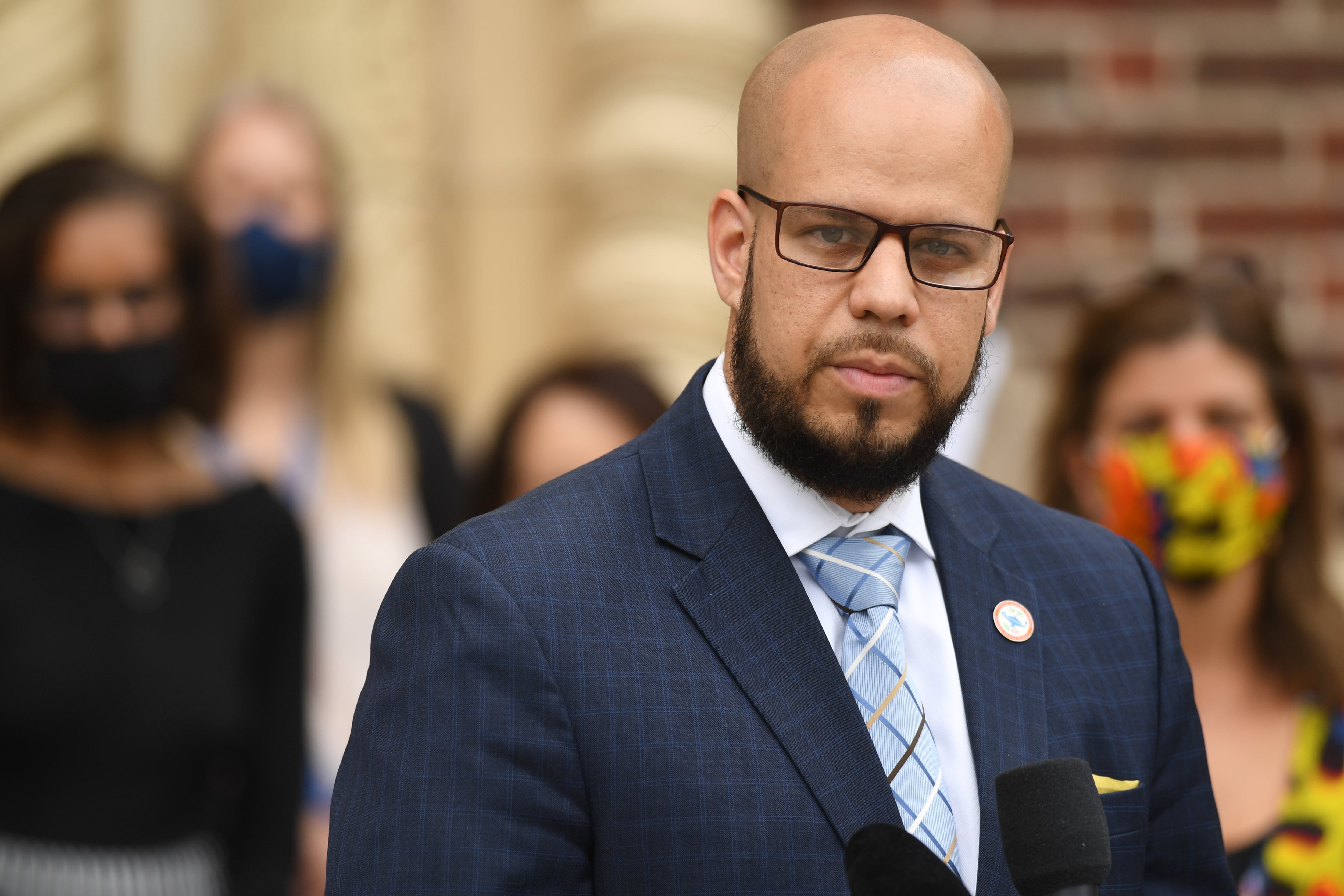Denver Superintendent Alex Marrero said he hopes to have a plan to reduce school segregation as soon as next summer, and the school choice process could be a tool — with the right policies in place — to get that result.
Marrero made his comments in an interview Tuesday in response to a new study from the Latino Education Coalition highlighting “pervasive” school segregation in Denver.
Latino students and English learners are especially likely to attend high-poverty schools where the large majority of students are students of color, the study found. Most white students and affluent students also attend schools where a significant majority of students are from similar backgrounds as themselves. Students from all groups who attend schools with more affluent students have better academic outcomes on average, the study found.
“I don’t know that we need more evidence,” Marrero said. “It’s clear. What we need is action.”
Dismantling systems of oppression is the framework Marrero has used for his goals as superintendent. He said it’s “more than likely” he will identify school segregation as a system of oppression that needs to be dismantled.
The Latino Education Coalition study was not designed to identify causes of segregated schools or recommend policy changes. Marrero said the next step is a second study in collaboration with the coalition and other community partners to examine those issues.
Marrero said he hopes that second study could be complete by the end of the school year and guide recommendations to the school board that could be implemented for the following school year.
The problem won’t fix itself, he said.
“Absent effective board policy, we’ll have exactly what we have right now,” he said.
Back in 1973, Denver was the subject of Keyes vs. School District No. 1, the first major school desegregation case outside the South. It led to decades of busing that achieved integrated schools but also contributed to white flight to surrounding suburbs. When the court order was lifted in 1995, Denver schools resegregated almost overnight.
Several past studies have identified similar issues as the new Latino Education Coalition report, and at various points the district has tried certain tweaks, such as creating enrollment zones and reserving spots for low-income students in some of the city’s most sought-after schools, but the district’s schools remain largely segregated.
Craig Peña, one of the authors of the new report, was a child plaintiff in the Keyes case. “It’s hurtful,” he said, to see that segregation has been so persistent. He sees the report as a call to unify the community to find solutions.
Marrero said he initially questioned the motivation behind the study “because of other requests that study DPS to point the finger or to validate their preconceived notions,” but he said he appreciated how the Latino Education Coalition shared its data and wanted to cooperate on next steps.
“It validated what I observe day in and day out as I visit schools,” he said.
While the problem is clear, Marrero said there needs to be more studies to understand the causes and craft targeted policies.
“I anticipate something by the end of the school year so that we can have the summer to implement,” he said. Missing that window would be a loss, he said.
Many families want to send their children to neighborhood schools — and Denver has highly segregated neighborhoods. Meanwhile, school choice, which is enshrined in state law, allows families to enroll their children outside their neighborhoods. But desirable schools have long waitlists, and transportation is a barrier for many families. Meanwhile, in gentrifying neighborhoods, there are indications white, middle-class families use choice to avoid neighborhood schools that serve mostly children of color.
Asked if Denver could have neighborhood schools, school choice, and desegregated schools, Marrero paused and said that was “a great question.”
Marrero said there may be ways to shape the school choice process to produce more integrated schools.
Milo Marquez, chair of the Latino Education Coalition, said it also may be necessary to look at how neighborhood school boundaries are drawn. In the years before the Keyes case, Denver manipulated those boundaries to maintain segregated schools as Black families moved into Park Hill. There could be situations today where boundaries also contribute to keeping students of different ethnicities and incomes apart, he said.
The report found that Black students today, on average, are more represented in higher-income and predominantly white schools than are Latino students, and that in low-income schools, Black students are represented similar to their share of the student population as a whole.
The report did not look at internal segregation within schools, such as whether white students are more often steered into honors programs while Black students are routed into traditional classes. Black boys, in particular, are overrepresented in affective needs centers, separate programs for students with serious disabilities. A state investigation last year found DPS systematically violated the rights of Black boys by sending them to these programs without sufficient evaluation and by keeping them there without addressing their educational needs or monitoring progress.
Marrero has made changing how students are identified for placement in affective needs centers as another system of oppression he intends to dismantle.
Marrero said the district can make progress on both fronts, as well as reduce disparities in discipline and reduce test score gaps that are the widest in the state.
“I do believe that we will see that gap close during this administration,” he said.
Bureau Chief Erica Meltzer covers education policy and politics and oversees Chalkbeat Colorado’s education coverage. Contact Erica at emeltzer@chalkbeat.org.







